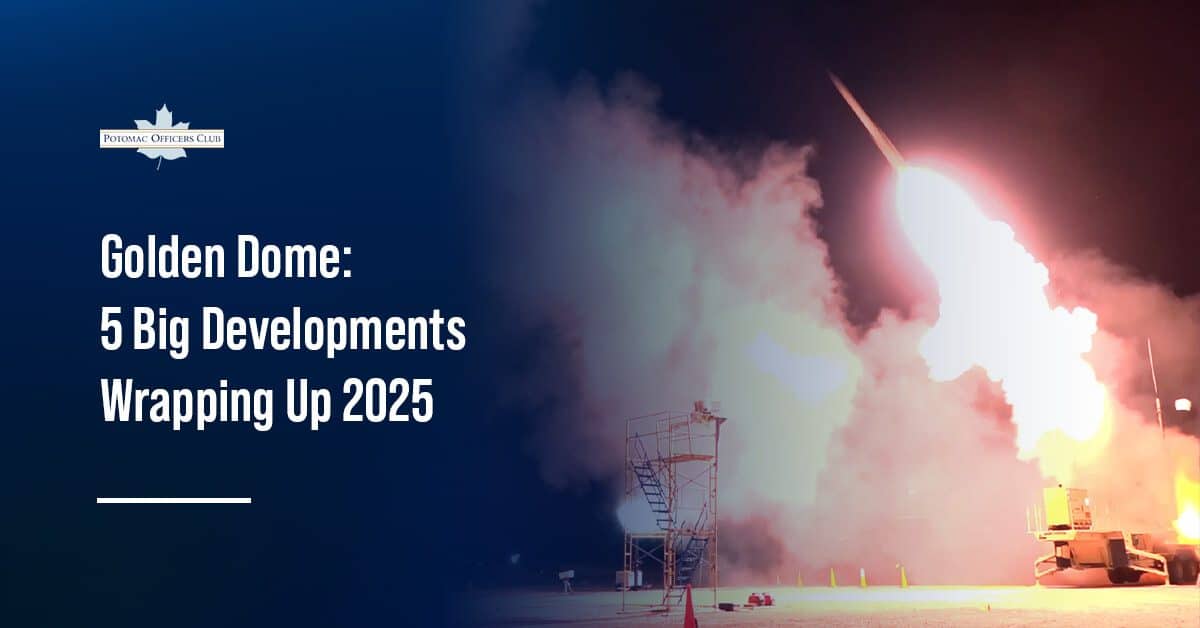
Explore the Navy’s AI Efforts at the 2024 Navy Summit
The U.S. Navy is working to harness the power of artificial intelligence tools and technologies. Below is a look at the Navy’s latest AI-related efforts. If you’re interested in the latest AI news from the U.S. Navy, you won’t want to miss the Potomac Officers Club’s 2024 Navy Summit on Aug. 15 — join the event here.
Machine Learning for Underwater Unmanned Vehicles
The U.S. Navy and the Defense Innovation Unit have awarded success memos to five vendors for prototypes and fielded machine learning operations tools that can modify, track and redeploy ML algorithms on unmanned underwater vehicles to detect underwater threats.
The five awardees — Arize AI, Domino Data Lab, Fiddler AI, Latent AI and Weights & Biases — will move into production of their MLOps tools developed under Project Automatic Target Recognition using Machine Learning Operations for Maritime Operations, known as Project AMMO.
AUKUS Pillar 1 Submarines
AI is a key component in initiatives coming out of AUKUS, the trilateral security agreement between Australia, the United Kingdom and the U.S. Under Pillar 1, Australia will purchase three Virginia-class, conventionally armed, nuclear-powered submarines by the 2030s. Pillar 2 mostly covers efforts to sustain peace and stability in the Indo-Pacific region.
During a December 2023 meeting between the three countries’ leaders, they said AI algorithms and machine learning will be used to “enhance force protection, precision targeting and intelligence, surveillance and reconnaissance.”
Empowering Mission-System Modernization Through Technological Innovation
How is the U.S. Navy leveraging cutting-edge technologies to achieve mission success? Find out during the “Empowering Mission-System Modernization Through Technological Innovation” panel discussion at the Potomac Officers Club’s 2024 Navy Summit on Aug. 15. Join the conversation to learn about these topics:
- How a low-code agility layer, process automation, and AI are revolutionizing mission-system modernization at the U.S. Navy and Marine Corps
- How these cutting-edge technologies enhance operational efficiency, streamline processes, and foster seamless cooperation among military branches
- Gain insights into leveraging these technologies to drive innovation and achieve mission success
Meet the “Empowering Mission-System Modernization Through Technological Innovation” Panelists
Matt Beran
Matt Beran, the industry lead for global defense and intelligence programs at Appian Corporation, will moderate the panel discussion. Before joining Appian, Beran was the national security lead counsel at Systems Planning and Analysis, Inc.
Prior to his time in the GovCon industry, Beran was a naval officer with the U.S. Navy for over 30 years. His most recent roles with the U.S. Navy include: division director, Code 67 for the Office of the Judge Advocate General; deputy chief knowledge officer and special assistant for knowledge management for the Office of the Judge Advocate General; and executive officer/deputy commander of the mid-Atlantic region legal service office.
Van Hendrey
Van Hendrey is the executive director and program executive officer for integrated warfare systems for the U.S. Navy. Previously, Hendrey served as the MARS — or Machine-assisted Analytic Rapid-repository System — program manager at the Defense Intelligence Agency for three years.
Before her time with DIA, Hendrey held roles including deputy program manager for mine warfare at the Naval Sea Systems Command, or NAVSEA, and director of undersea warfare systems for the Navy. Hendrey collectively spent more than eight years with NAVSEA across her career, holding multiple leadership roles.
Lt. Col. Jack Long
Lt. Col. Jack Long is the acting Navy chief AI officer for the Office of Naval Research. In this role, Long is focused on using artificial intelligence and machine learning to increase the lethality of U.S. Naval forces.
At an event hosted by the Naval Information Warfare Center Pacific in March 2024, Long underscored the importance of leveraging emerging technologies in support of the Navy’s mission.
“We are very much focused on maneuver warfare, rapidly seizing the initiative, breaking apart the enemy’s coherence and beating them through that,” he said during a keynote speech. “Fighting smart is how you do that. We need to make decisions faster than they can and put them in a position they’re unable to react to… if we are not leveraging these tools, we’re not going to be able to do that.”

Category: Articles




